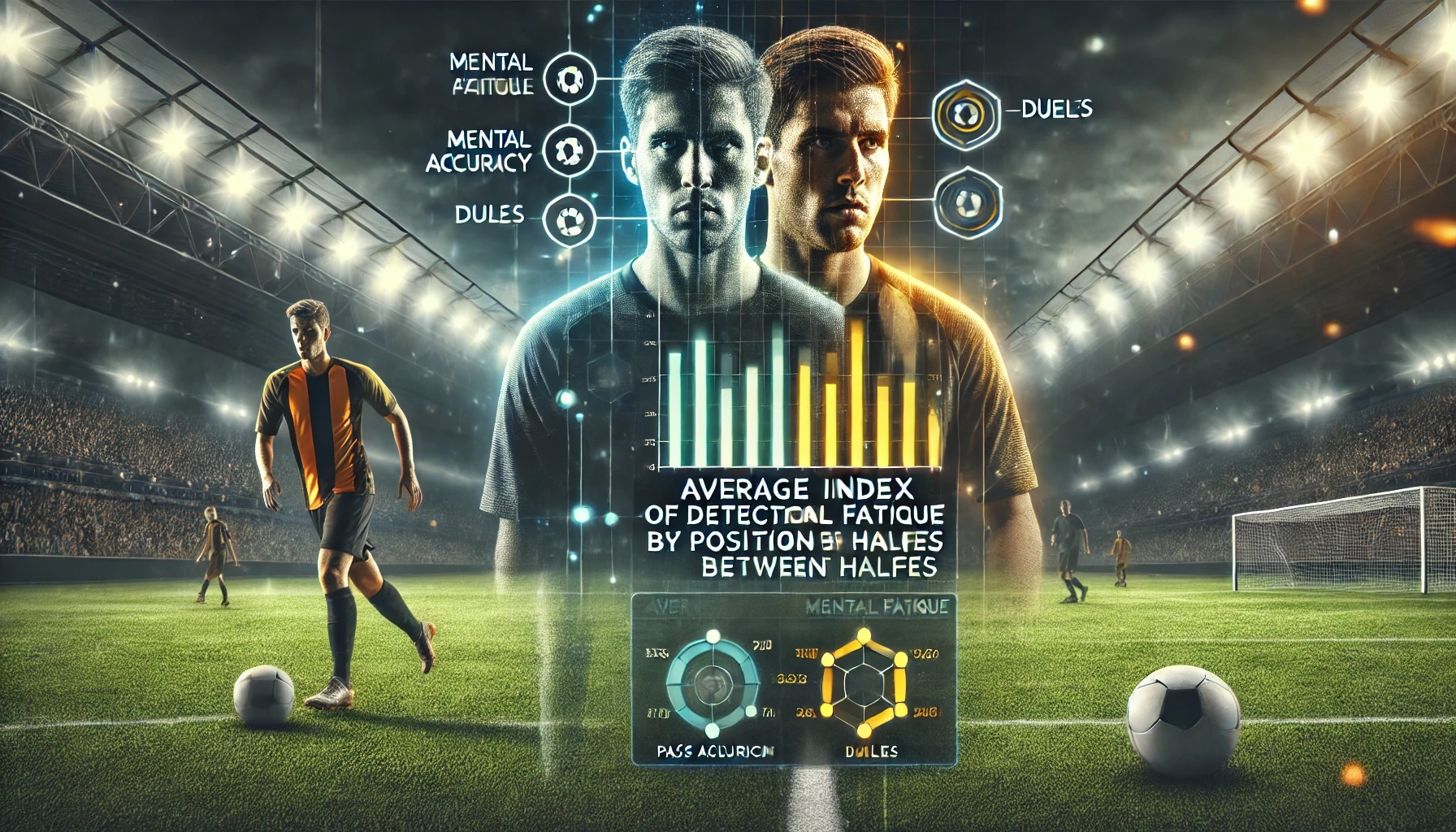
04 Nov How to Detect Mental Fatigue in Your Players: Practical Insights with the Mental Fatigue Detection Index

Introduction
In professional football, understanding the impact of mental fatigue can be key to improving team performance in critical moments. This research from LALIGA, based on data from LALIGA EA SPORTS players during the 2023/24 season, introduces a Mental Fatigue Detection Index that combines four essential metrics: success in passes, drives, duels, and first actions. This index allows us to assess the players’ mental wear and its effect on performance between the first and second halves of matches.
Here, we break down the findings and provide practical insights for coaches, applicable to daily training and competition.
What is the Mental Fatigue Detection Index and Why Does it Matter?
The Mental Fatigue Detection Index reflects players’ ability to maintain precision, control, and effectiveness in the game under conditions of fatigue. By combining four metrics into a single measure, the index offers a clear view of the impact of mental wear. We analyzed changes in this index between the first and second halves of matches to identify fatigue patterns in key players.
Key Findings and Practical Applications
1. The Mental Fatigue Detection Index Decreases in the Second Half for Players with High Minute Loads
- What We Found: The data reveals that players accumulating more minutes tend to experience a significant decrease in their Mental Fatigue Detection Index during the second half. This suggests that accumulated fatigue impacts not only their physical performance but also their ability to maintain technical precision and effectiveness.
- Practical Application: For key players with a high minute load, consider implementing specific recovery strategies and, in some cases, rotating their participation at certain points. This will help maintain not only their physical condition but also their mental and technical sharpness. Incorporating training that simulates fatigue can help players learn to manage the ball and make decisions under pressure.
2. Most Affected Positions: Central Midfielders and Central Defenders
- What We Found: Players in positions such as central midfield and central defense show a more pronounced decrease in their Mental Fatigue Detection Index during the second half. These roles, which typically require high levels of concentration and decision-making, are more susceptible to mental fatigue in high-load situations. Central midfielders, in particular, are the most affected, likely due to their responsibilities in controlling and distributing the game.
- Practical Application: During training, central midfielders and central defenders may benefit from exercises that specifically reinforce concentration and ball control under pressure. In competition, consider this mental fatigue tendency to plan substitutions or tactical adjustments in the second half, when these players could be under greater strain.
3. Impact on Game Control and Practical Recommendations
- What We Found: The Mental Fatigue Detection Index, reflecting success in key technical actions, indicates that when players experience a drop in performance, the team becomes more vulnerable to losing control of the ball and giving the opponent opportunities. A decrease in the index suggests that mental fatigue is affecting the game’s fluidity and precision.
- Practical Application: If your team relies on ball control, it is essential for players to practice these actions in simulated fatigue conditions. Additionally, you can design strategies in which, during the second half, other players or positions help relieve the workload on central midfielders and central defenders so they can maintain their passing and driving accuracy.
Conclusion: Optimizing Training and Second-Half Strategies
This study provides solid data to understand how mental fatigue affects the Mental Fatigue Detection Index in players, especially those with high minutes and in mentally demanding roles. As a coach, applying these findings can help you:
- Adjust training load and recovery methods for players with accumulated minutes.
- Implement rotation strategies in games, considering that certain key players may see their performance affected in the second half.
- Design training sessions that reinforce concentration and ball control under fatigue, especially for critical positions like central defense and central midfield.
Applying these results will allow coaches to optimize both individual and team performance, maintaining control of the game and improving the team’s response in crucial moments of competition.


